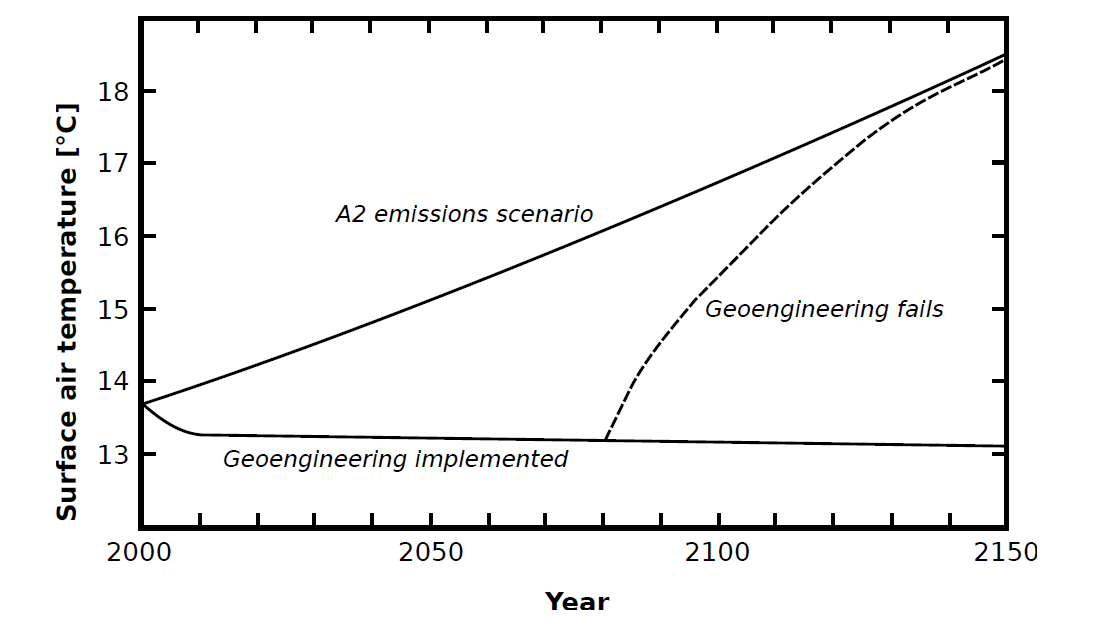This article summarizes the geoengineering double catastrophe scenario, previously detailed in the research paper Double catastrophe: Intermittent stratospheric geoengineering induced by societal collapse.
The article begins as follows:
It could be difficult for human civilization to survive a global catastrophe like rapid climate change, nuclear war, or a pandemic disease outbreak. But imagine if two catastrophes strike at the same time. The damages could be even worse. Unfortunately, most research only looks at one catastrophe at a time, so we have little understanding of how they interact. My colleagues and I at the Global Catastrophic Risk Institute are beginning to fill this void, starting with a new paper [1] involving climate engineering and a separate catastrophe combining for a “double catastrophe”. It’s a grim prospect that could even result in human extinction, but we can also work to avoid it.
Let’s start at the beginning of the scenario. Yes, the climate is changing, and we’re already seeing damages from it. But our planet is, as they say, just starting to warm up. Unless we do something to keep temperatures down, things could get much worse. One grim possibility is that large portions of Earth become uninhabitable to mammals [2]. (That includes us.) Temperature and humidity get too high for mammals to cool our bodies through perspiration – even if the wind’s blowing – and so we overheat and die. By continuing to put greenhouse gases into the atmosphere, we are tempting an extremely dangerous fate.
Alarmingly, we have been slow to reduce greenhouse gas emissions, and the climate is changing faster than ever. Because of this, some people – myself included – have been interested in alternative ways to cool things down, mainly by engineering the planet. There are several approaches to climate engineering (also known as geoengineering). The most popular approach involves putting little particles into the atmosphere to reflect incoming sunlight back out to space. The more particles we put up there, the less sunlight reaches the surface, and the cooler temperatures will be. If it works, it could help us avoid the worst harms of climate change.
The remainder of the article is available in Scientific American or in PDF archive.
Image credit: Seth Baum




